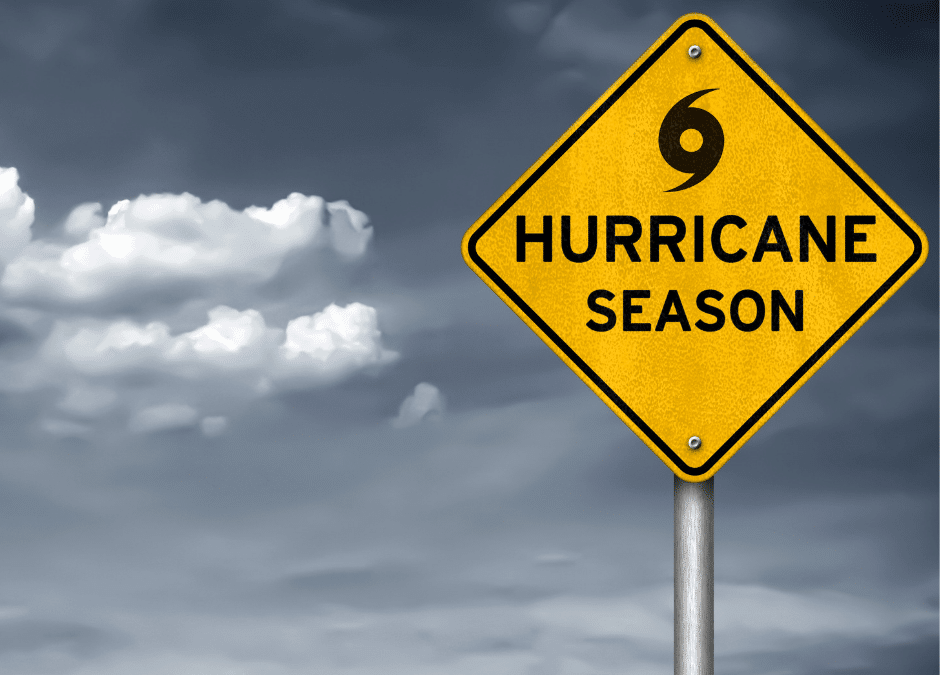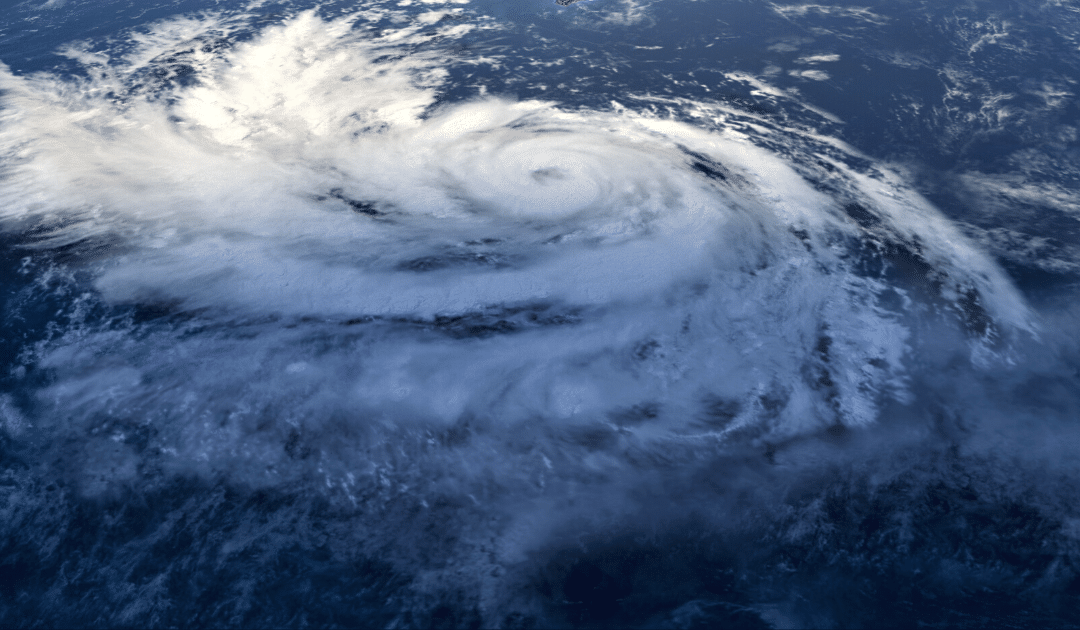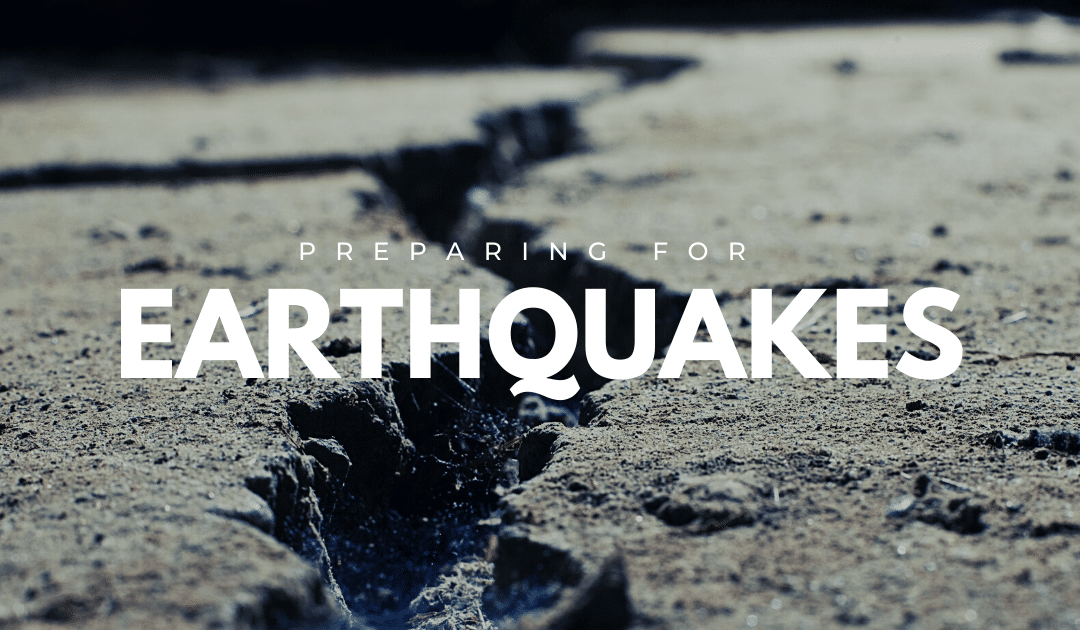
by California Casualty | Auto Insurance Info |
From hail to high winds, flooding, and more, spring storms can do some real damage — and not just to your home and property. These intense storms can also take their toll on your car.
Here are some ways you can protect your vehicle from spring storms.
Take cover – and cover-up — during hailstorms.
Hailstorms do billions of dollars of damage each year, according to the Insurance Information Institute. If you live in one of the states that typically receives a lot of hail, your car could be at even greater risk. But even if you don’t, it only takes one bad hailstorm to dent your vehicle or crack your windshield.
-
- If you have a garage or barn, park your car inside. Being in an enclosed structure will help protect your car from hailstones and flying debris.
- It may be a bit inconvenient but you can find covered parking in malls or parking garages. Park above the ground floor to minimize contact with water in case there is flooding.
- If you cannot park inside, move your car away from trees. Park near the side of a building or your house for some protection.
- Cover your vehicle with a car cover. You can buy one or make your own with blankets. Secure the blankets with duct tape; while it may leave a sticky residue, it will not damage your paint.
- If you’re driving when a hailstorm hits, pull over. Hailstones fall at a pretty good speed. When you add your car’s forward motion, that actually increases the impact.
Stay far from trees and other cars in high winds.
High or straight-line winds can leave destruction in their wake, from downed trees to flying debris. Check with your local weather service on wind speeds and know what wind can do. Winds traveling at 50 mph can move patio furniture. At 60 mph, they can pick up a car and shatter windows.
-
- Park away from trees, which could potentially fall or drop heavy branches on your vehicle. Stay away from power lines, too.
- Park inside if space is available. Reinforced garage doors are helpful if you’re in a place with frequent high winds.
- If time permits, trim your tree branches in advance of the storm. Also, remove any items that could potentially impact your car.
- Remove valuables from your car that could be blown away if winds hit high speeds and shatter your windows. Don’t tape your windows; it’s a myth that tape will help contain the glass and prevent tiny shards from flying around.
- If you’re driving in strong winds, consider pulling over. If you continue driving, keep plenty of space between you and the cars around you.
Stay high and dry when it rains and floods.
Rain and flooding can cause serious problems with your car. Water can damage your engine, electrical components, and interior. Its effects may not even show up immediately. You may have trouble starting your car, or notice premature rusting.
-
- Make sure your windows are rolled up, and your sunroof is closed before a rainstorm. If water gets inside your car, it can cause mold to grow.
- Store important documents for your car in a water-tight bag.
- Park on high ground if possible, or in a garage.
- You can purchase a flood cover that may help to protect your car.
- Avoid driving through pools of water. The water could reach your car’s undercarriage.
- Stay off the roads if you can. Floodwaters can rise quickly and you want to avoid contact with your car.
- If your vehicle stalls in a flooded area, do not remain with your car. Exit your vehicle and get to high ground. It takes just 12 inches of rushing water to carry away a small car and 2 feet of rushing water can carry away most vehicles, according to AAA.
Know what to expect and plan ahead.
Your local town or your state will likely issue severe weather alerts. Getting a heads up on impending storms will help you make the proper preparations ahead of storms this spring.
-
- Download a weather app on your phone for advance notice.
- Research places in case you need to take shelter, including where to park your car.
- Check your tires and make sure they are fully inflated.
- Check your windshield wipers and replace blades that leave streaks.
- Make sure that you have a full tank of gas in case you need to evacuate.
Make sure you have the right insurance coverage to protect your vehicle.
Despite your best efforts to protect your vehicle, sometimes damage happens. But if you have the right insurance coverage, you’ll likely be able to repair or replace your vehicle without large out-of-pocket costs.
-
- Comprehensive coverage is for natural disasters, fires, vandalism, theft, and animals that damage your vehicle. Think of it as “bad luck coverage.” Comprehensive coverage is not usually required unless you’re leasing a vehicle or paying a car loan. However, it’s valuable to protect your car from spring storm damage.
- If your car needs to stay in the shop, an insurance policy with rental car coverage will be most helpful.
- If spring storms damage your car to the extent that it is totaled, your insurance policy will likely pay you for the actual cash value of your car.
- Talk to your insurance agent to see what is covered under your auto policy before spring storms hit!
This article is furnished by California Casualty, providing auto and home insurance to educators, law enforcement officers, firefighters, and nurses. Get a quote at 1.866.704.8614 or www.calcas.com.

by California Casualty | Homeowners Insurance Info, Safety |
Hurricanes are natural disasters that bring demolishing winds and massive amounts of rainfall to land from the ocean. Coastal towns and cities across the world have been torn apart by hurricanes, but they aren’t the only ones who are usually affected. Hurricanes can cause significant damage to towns over 100 miles inland! September, is the most active month of the year, so now is the time to protect yourself and your family from these deadly natural disasters.
The relative lack of storms so far this hurricane season is bringing both good and bad news. While we are all taking a sigh of relief that there has yet to be a major storm, it could also be bringing a false sense of security. Many people in states where hurricanes usually hit may be “dropping their guard.” A new survey finds only a quarter of those living in hurricane-prone states think they are prepared if a monster storm hits, and nearly half of the respondents say they have yet to make any preparations this year.
Remember all hurricanes, no matter what size, have the potential to cause significant damage and life-threatening situations. Looking back at the destruction previous hurricanes like Harvey, Sandy, and Katrina have caused, it is essential that you make sure your family, home, and belongings are completely protected.
Important Hurricane Coverages:
- Flood Insurance. A regular home insurance policy will not pay for damages caused by flooding, but when you add flood insurance to your policy it will cover all damages that happen to your property, even if you rent! Be aware that when you add flood insurance there is a 30-day waiting period until it goes into effect, so that means it is often too late to purchase it when a hurricane or tropical storm is approaching.
- Scheduled Personal Property Insurance (Floater). Many people find that after a natural disaster their insurance coverage is limited on expensive personal items (ex. jewelry, furniture, technology, firearms, collectibles, furs, instruments, etc.). Floaters protect your personal items for their full value.
Steps to Protect Your Home & Family
- Heed evacuation notices and keep your car’s gas tank full in case of evacuations
- Stock up on essentials like bottled water, non-perishable food items, toilet paper, and pet food
- Make sure pets are kept inside, safe, and have a spot to do their “business”
- Have a family evacuation and communication plan
- Prepare an emergency kit (ex. flashlight, medicines, cash, and important documents)
- Get a NOAA Weather Radio
- Sign up for National Weather Service storm texts at https://www.weather.gov/subscribe-hurricaneinfo
- Charge cell phones and other devices and have charged spare batteries
- Install storm shutters or purchase 5/8 exterior grade or marine plywood to cover windows or doors
- Add straps or additional clips to roofs to reduce damage
- Bring in or secure anything that can be propelled by wind (ex. grills, bicycles, lawn furniture, play equipment, etc.)
- Know how to turn off propane tanks and gas lines
After a Hurricane Strikes
- Make sure you, your family, and pets are safe and secure
- Register yourself as “safe” on the Safe and Well website
- Follow all city boil and curfew orders
- Secure the property from further damage or theft
- Contact your insurance company as soon as possible
- Keep or document receipts and other expenses if you are evacuated or forced to find another place to live because of damage to your home or apartment
- Be wary of unscrupulous contractors following a natural disaster
It’s important to know that flooding and storm surge are the biggest threats to life when hurricanes hit. Leave low-lying areas, never drive or cross through running water, and avoid rivers, streams, and creeks; which could flash-flood.
For more information visit:
https://www.ready.gov/hurricanes
https://mycalcas.com/?s=hurricane
https://www.iii.org/article/preparing-hurricane
https://www.cdc.gov/features/hurricanepreparedness/index.html
https://www.redcross.org/get-help/how-to-prepare-for-emergencies/types-of-emergencies/hurricane.html
This article is furnished by California Casualty, providing auto and home insurance to educators, law enforcement officers, firefighters and nurses. Get a quote at 1.866.704.8614 or www.calcas.com.

by California Casualty | Travel |
After an entire year with little-to-no travel, if you’re like many Americans, you’re planning to go on a vacation this summer. Whether you’re taking a short road trip or a long getaway, creating a travel itinerary will help you and your family stay organized and get the most from your trip.
Use this step-by-step guide to create a travel itinerary that’s flexible and fun!
1. Choose a timeframe. Set a budget.
Two important factors will determine where and when you can travel: time and money. If you have a certain number of vacation days or a smaller budget, you’ll want to plan your trip accordingly. (The good news is that there are plenty of places for budgets of all sizes.)
2. Select your vacation spot.
Choose a place with the types of activities that you enjoy. Some people like to sightsee. Others prefer to relax on the beach. And some like to stay active, such as hiking and biking. The activities you want to do will help determine where you should go. Your vacation spot is the starting place for your travel itinerary.
3. Book your flights, transportation, and lodging.
Once you have chosen your destination, it’s time to make travel arrangements. Before booking you’ll need to make a few decisions. Will you be driving or flying? And are you staying in a hotel or renting out a location like Airbnb?
To stay organized during this step, record all of your information in one place on your computer or other device. (Microsoft Office offers free itinerary templates and so do Adobe and Google docs.) Include flight numbers, Airbnb or hotel addresses, rental vehicle information, and other confirmation numbers so you won’t have to search for them later.
Don’t forget! If you aren’t bringing your pet with you, you’ll also need to find them lodging.
4. Research the sights and activities.
This is when it gets fun! Check out the location’s history, food, family activities, and nightlife. Search for unique experiences at your destination. Involve every member of the family who is traveling with you to get their ideas. When you have your list compiled, rank your “must visit” spots and “must-do” activities.
Need help finding activities in your destination? Good sources of information include the local tourism office and online travel reviews on sites such as TripAdvisor, Expedia, Foursquare, Yelp, and Google.
5. Map it out.
Start with a map of your destination—either paper or online. Mark the location for each of your activities. Mark the place where you’re staying. Then, divide the map into sections. This will give you a guideline for grouping activities and help you time out your days.
6. Build the Itinerary.
Work in the same template where you recorded your flight and lodging information (in step 3). List each day that you’ll be traveling. Start with the first section of the map and assign activities to the first day. Determine how much time you will spend at each spot. Don’t forget to consider hours open, downtime between each activity, meals, and rest time. Continue through the trip timeline, and be realistic. If you’re traveling with a toddler or your pet, for example, you’ll need to be flexible.
7. Book your tickets and excursions.
Once you know where you’re going and when you can book your tickets. Keep copies of confirmations in your itinerary for easy access. Booking ahead will often save time but if you’re unsure that you’ll get to a certain activity that day, you can always make the purchase onsite.
8. Remember that less is more.
Your vacation should be relaxing, not stressful. Leave several hours free each day for interesting sidetracks or unexpected opportunities. You may find recommendations from a local that could be the highlight of your trip.
9. Plan for the unexpected.
Maybe it will rain, or you’ll miss your connecting flight. You might not have Internet access in the place you’re traveling. If any of these things happen, don’t get down and frustrated. Think ahead and have a “Plan B” in place when you are creating your itinerary. An alternate inside activity could help in inclement weather, know the steps to take if you miss a flight so you can board the next one, carry a book in case you don’t have Wi-Fi, etc. Remember this is your vacation and your attitude could affect your entire trip and those traveling with you. If something unexpected happens, go with the flow and don’t let it ruin your fun.
10. Travel safely.
Take the precautions you need to make it a safe trip. Make copies of your important documents from passport to driver’s license. Share your itinerary with a trusted family member or friend. If you’re traveling abroad, register with the Smart Traveler Enrollment Program. This will allow you to receive important information from the U.S. Embassy about the country you’re visiting.
11. Lastly, consider adding travel insurance.
Travel insurance provides a safety net in case your trip is canceled. Check to see if you need specific coverage. For example, you will want a tourist auto policy if you’re driving to Mexico and a recreational vehicle policy if you’re traveling in an RV.
A Little Help from an App
There are several websites and apps that are specially designed to create travel itineraries. These tools can be timesavers and many have free versions that you can use, including:
-
- Tripit.com
- Tripcase.com
- TripHobo.com
- Roadtripers.com
It’s exciting to plan a vacation, but it can also be overwhelming. Take a step back and consider why you are traveling. Then focus on the things that are important to you, such as spending time with loved ones. The rest will fall into place.
Remember life is all about the journey, not the destination. Safe travels.
This article is furnished by California Casualty, providing auto and home insurance to teachers, law enforcement officers, firefighters, and nurses. Get a quote at 1.800.800.9410 or www.calcas.com.

by California Casualty | Safety |
Do you know the difference between a Category 2 and 3 hurricane? Do you know why a 5 is so bad? Are you clear on what safety precautions you’d need to take when expecting a Category 2 versus a 4?
Read on to better understand what the 5 hurricane categories really mean and what impacts each can bring to your home and community. Understanding the details will help you think through how to better prepare for hurricane season.
It’s All About the Wind Speed
The category numbers — 1 through 5 — come from the Saffir-Simpson Hurricane Wind Scale. Meteorologists rely on this scale to better understand a hurricane’s expected magnitude and predict the damage that will come when the storm makes landfall.
Ratings focus on sustained wind speed for the simple fact that with higher wind speeds come more damage — not only direct wind damage but also storm surges, rain-induced flooding, tornadoes, and more.

-
- Wind speeds: 74-95 mph
- Danger level: Very dangerous winds will produce some damage.
- Threat to homes, structures, and property: Winds can damage roof, shingles, siding, and gutters on well-built framed homes. Trees may topple and branches snap off. Protected glass windows generally remain intact.
- Community impacts: Potential damage to power lines and poles, leading to short-term power outages.
- Take note: Injuries to people and animals are limited and typically come from flying debris.

-
- Wind speeds: 96-110 mph
- Danger level: Extremely dangerous winds will cause extensive damage.
- Threat to homes, structures, and property: Framed homes susceptible to major roof and siding damage.
- Community impacts: Near-total power loss expected with outages lasting days to weeks. Significant structural damage to mobile homes, apartment buildings, and shopping centers. Flooding of low-lying areas is possible.
- Take note: Stock up on filtration systems for potable water.

-
- Wind speeds: 111-129 mph
- Danger level: Devastating damage will occur.
- Threat to homes, structures, and property: Major damage and/or removal of roof decking and gables possible on well-built framed homes. Mobile homes and poorly constructed homes are often destroyed. Many trees will be uprooted or snapped, blocking roadways.
- Community impacts: Water and electricity unavailable for days to weeks after the storm passes. Extensive inland flooding is possible.
- Take note: Make sure to be well-stocked with food and water if you choose not to evacuate.

-
- Wind speeds: 130-156 mph
- Danger level: Catastrophic damage will occur.
- Threat to homes, structures, and property: Well-built framed houses subject to severe damage, including loss of most of the roof and/or some exterior walls. Shopping centers and apartments also typically sustain severe structural damage.
- Community impacts: Power outages will last weeks to months. Neighborhoods in the strike zone will be uninhabitable for weeks or months.
- Take note: Sheltering in place is typically not recommended, but if you do, ensure you have a good supply of food, water, medications, etc.

-
- Wind speeds: 157 mph or higher
- Danger level: Catastrophic damage will occur.
- Threat to homes, structures, and property: Complete or almost-total destruction of framed homes, mobile homes, shopping centers, apartments, and commercial buildings.
- Community impacts: Nearly all trees will be snapped or uprooted, with many becoming airborne and acting as projectiles. Long-term water shortages should be expected, as well as a very long time to rebuild the community. The area will be uninhabitable for weeks or months.
- Take note: You should not be anywhere near this storm. Evacuate well ahead of time.
As with any natural disaster or extreme weather event, make sure you stay informed via local news and weather alerts. Listen for and follow evacuation orders.
Read our guides on how to prepare for hurricane season, pack an emergency kit, and what to do after a natural disaster.
Finally, remember that although the best hurricane preparations come well before hurricane season itself, it’s never too late to get informed and prepared.
This article is furnished by California Casualty, providing auto and home insurance to educators, law enforcement officers, firefighters, and nurses. Get a quote at 1.866.704.8614 or www.calcas.com.

by California Casualty | Homeowners Insurance Info, Safety |
Chances are good that if an earthquake hits, you’ll be at home — especially now, when many of us are working at home due to coronavirus.
Luckily, there are simple things you can do today to safeguard your home and better protect yourself and your family before an earthquake strikes. Start with our 12 to-dos below. You’ll also find 3 top tips for what to do during a quake and, just as importantly, what not to do.
Inside Your Home
Whether it’s the kind that rolls in waves or arrives with a sudden jolt, an earthquake will surely shake your home and its contents. More people are injured by falling objects or furniture than by building damage. Make your home safer by securing and moving furniture and accessories, especially where people sit, sleep, or spend a lot of time. Pay special attention to heavy objects: move them lower to ground level and also make sure they’re not close to escape routes or doorways. Here are 12 other items to check and secure:
-
- Bookshelves – Tall bookshelves are an accident waiting to happen, as they’re unstable to begin with, and their contents can easily become airborne. Secure them to a wall stud using L-brackets and place the heaviest items on bottom shelves.
- Chemicals – If you have chemicals stored on open shelves in the garage or basement, protect them against spills by installing wood, plexiglass strips or wires to restrain them. If containers are behind cabinet doors, use latches to secure the doors.
- Display Cases – Secure these to the floor using appropriate brackets. Install safety glass if possible. Try to secure shelves inside the case as well.
- Electronics – For large electronics such as flat-screen TVs and entertainment centers, buy a “safety strap” kit, which contains straps and buckles designed for these heavy electronics.
- Hanging Objects – These are especially prone to be thrown around in a quake. Framed pictures and mirrors should be hung from closed hooks so they can’t bounce off walls. You can also use earthquake putty to secure corners. Move medium or large-sized pieces so they’re hung on studs, which is more secure being hung on drywall only. Make sure any hanging plants are well away from windows.
- HVAC Units – Anchor units using restraint brackets or seismic snubbers.
- Kitchen Cabinets – Shaking can cause cabinet doors to fly open and throw contents onto the floor. This can lead to a floor full of glass and ceramic shards – not to mention damage to countertops and walls. Secure cabinets by installing one or more of several latches: hook and eye, standard latch, pull/throwover, push latches, child-proof, or seismolatch.
- Piping – Secure all overhead pipes using brackets.
- Refrigerator – Secure refrigerators and other major appliances to wall studs using earthquake appliance straps.
- Space Heaters – These should be equipped with support legs and properly spaced angles. Learn online to DIY or hire a professional.
- Suspended AC Units – These should be braced with angles or welded to a support rod.
- Water Heater – Proper fastening involves having 2 straps that wrap completely around the unit and are screwed into studs of the wall.
What to Do During a Quake
The more you move or try to run during an earthquake, the greater chance you’ll be injured by falling or flying objects. Instead, remember to:
1. Drop to hands and knees – Do this before the earthquake knocks you down. It protects you from being thrown down and allows you to move if you need to.
2. Cover your head and neck – Get under a sturdy table or desk as soon as you can. If you can’t get to one, get next to low-lying furniture that won’t fall on you or next to an interior wall. Wherever you end up, cover your head and neck for protection.
3. Hold on to your shelter – Hold on to the table or desk (or your head and neck) until the shaking stops. If you’re under a table, be ready for it to shift as the quake rolls – and move with it.
What NOT to Do
1. Run outside – A building’s exterior walls are the most dangerous place to be during a quake. Facades, windows, and architectural details are often first to collapse or break. If you’re inside, don’t run outside, and if you’re outside, don’t run inside – crossing the building exterior puts you at risk of being injured by falling debris.
2. Stand in a doorway – It’s a long-held idea that a doorframe is the safest place to be. In modern homes, a doorframe is no safer than any other part of the house and won’t protect you from airborne or falling objects. You’re safer under a sturdy table.
3. Get in the “triangle of life” – An email that’s gone viral in the last few years offers advice counter to the long-established “Drop, Cover and Hold On” advice. The actions outlined have been discredited as potentially life-threatening by experts and their organizations.
Earthquake safety really boils down to preparation. Although you can’t control where you’ll be when one hits, you can prepare yourself and your home starting right now. Between the tips above – and our articles on what to do before and after a quake and emergency kit basics – you’ll be well on your way to pro-level preparation.
This article is furnished by California Casualty, providing auto and home insurance to educators, law enforcement officers, firefighters, and nurses. Get a quote at 1.866.704.8614 or www.calcas.com.










